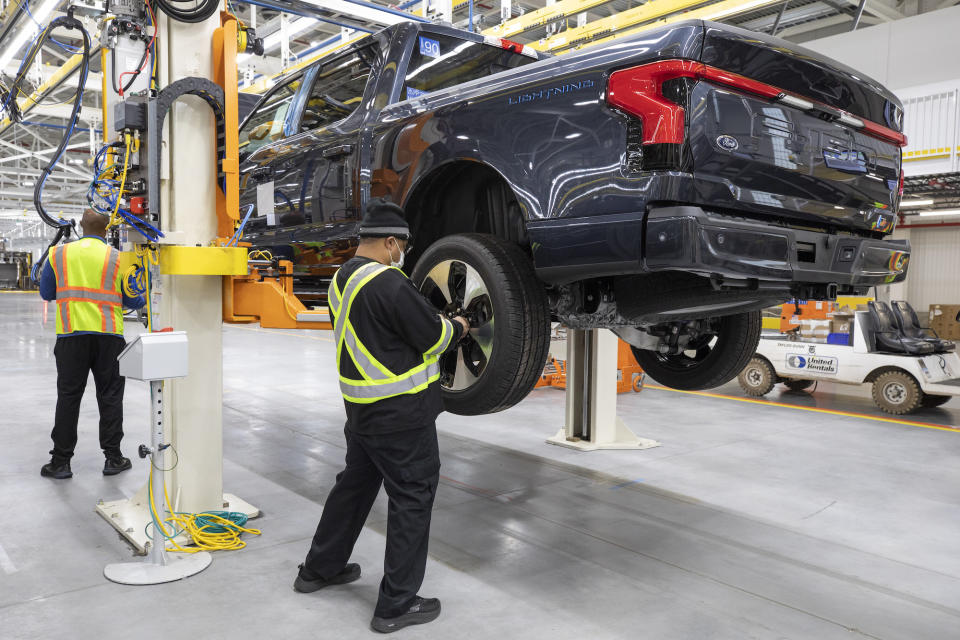Why Ford will have to eat an extra $1B in supplier costs this quarter

Ford said Monday that supplier costs will be $1 billion higher in the third quarter than expected due to rising inflation and persistent supply chain problems.
Ford also disclosed that supply shortages have caused a backlog of thousands of assembled, yet incomplete vehicles. Ford anticipates that between 40,000 and 45,000 unfinished vehicles — most of which are high-margin trucks and SUVs — will remain in the automaker's inventory waiting for needed parts through the end of the third quarter.
Shares fell 5.49% in after-hours trading.
Supply chain issues have plagued the automotive industry since early 2020 when the COVID-19 pandemic prompted governments in China, the U.S. and Europe to halt manufacturing operations. Supplier problems coupled with rising inflation continue to affect automakers' ability to deliver vehicles.
For instance, Rivian warned in August that it expects to lose $5.45 billion in 2022, up from the $4.75 billion estimate it shared three months earlier due to “supply chain challenges” and “raw material inflation.” GM reported in July second-quarter net income of $1.69 billion, a 40% reduction from the same year-ago period due to supply chain disruptions and semiconductor chip shortages that caused bottlenecks at its factories.
Despite the unexpectedly higher cost and availability of certain parts, Ford is sticking with its projected 2022 adjusted earnings before interest and taxes guidance of between $11.5 billion and $12.5 billion. That's largely because Ford expects to sell all of the vehicles sitting in inventory in the fourth quarter.
Ford did change its third-quarter adjusted earnings before interest and taxes to between $1.4 billion and $1.7 billion.
The company is scheduled to report third-quarter earnings results October 26.

 Yahoo Finance
Yahoo Finance 